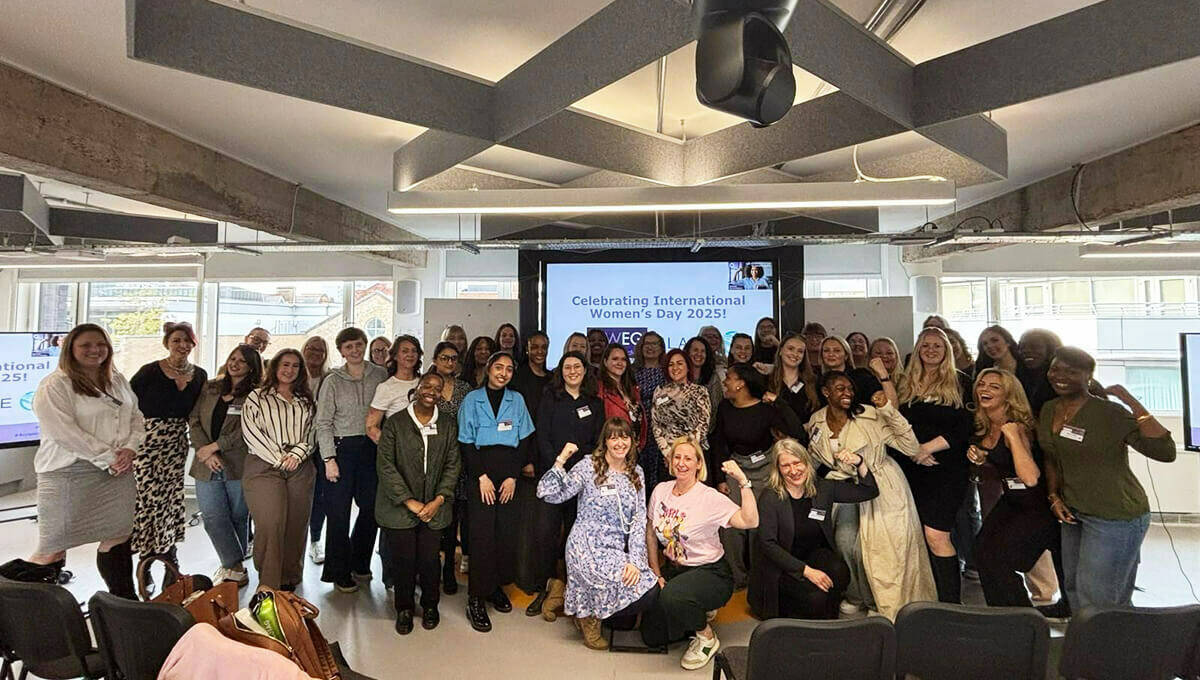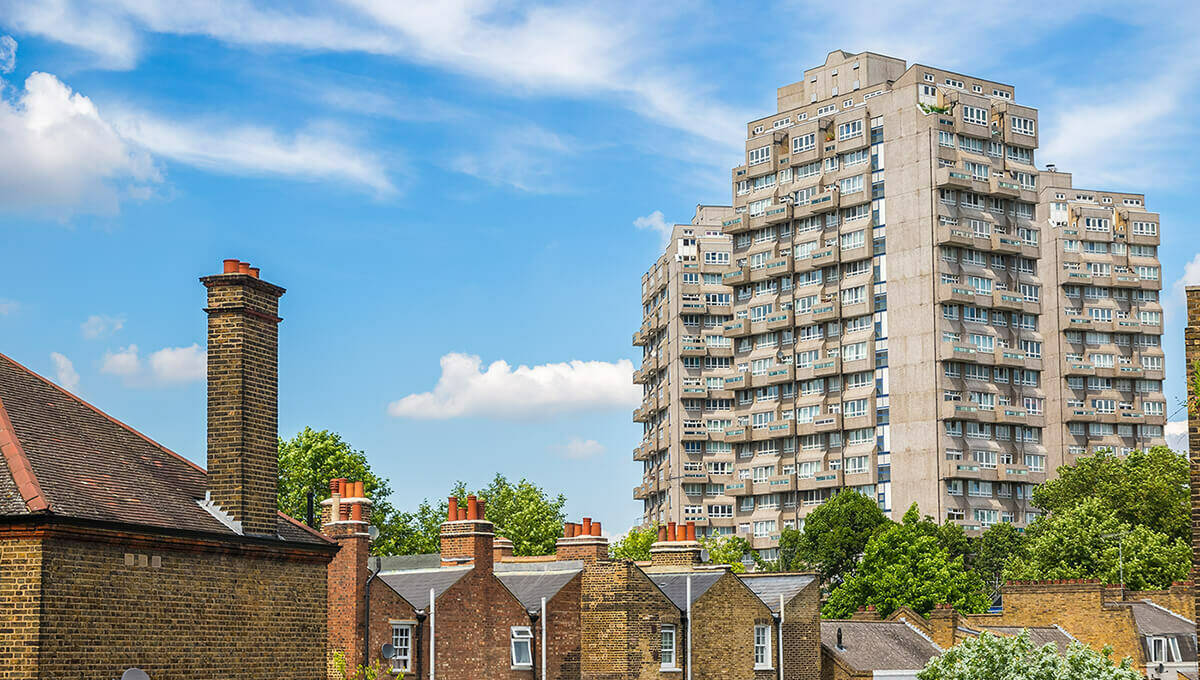Emily Griffiths, Head of Data Quality and Analytics, Josh Gooch, Senior Spatial Data Analyst, Luke Studden, Supplier Manager, Gayle Gander, Head of Marketing
At our annual conference, we wanted something special to show how address and street data can really ‘bring location to life'.
The GeoPlace annual conference is an event that brings so much expertise together, it’s hard to know where to start when we’re thinking about highlights of the day! This year though, one of the ‘big moments’ for everyone in the room was at the end of the day – with a show-stopping visualisation that was created in partnership with Ito World.
For nearly two decades, GeoPlace has been helping local government to create and maintain their Local Land and Property Gazetteers which contains Unique Property Reference Numbers (UPRN) and their Local Street Gazetteers which contains Unique Street Reference Numbers (USRN).
Every day, local authorities across England and Wales capture an enormous amount of change on the ground. Their work essentially maps the nation’s development and physical infrastructure over time.
This year, at the GeoPlace conference, we were delighted to showcase the way that this data – so carefully collected and managed by local authorities – is now being used in real world situations. Not just to bring services and citizens together, but as a way of visualising the world around us; demonstrating the landscape’s capacity for evolution – and highlighting the importance of street and address data in recording actual changes to the built-up environment.
We worked with Ito World to create a showstopping short visualisation that, at its heart, depends entirely on the work of Street and Address Custodians.
Working with Ito World
Ito World take commissions to visualise complex data through accessible and engaging media such as images and animations.
The work of our Street and Address Custodians takes on perhaps the most important role in making that possible – delivering the data needed to secure addressing and street references, precisely.
This visualisation shows just how pivotal that work is, mapping the nation’s development and infrastructure over time. The data councils capture is used for local service delivery, by emergency responders, by insurers – by everyone who needs to know where properties are and where our roads can take us.
Using address and street data created by Custodians, curated by GeoPlace and placed into context with OS MasterMap, Ito World were able to illustrate this by;
- visualising the development of the Olympic Park from 2005 to 2019
- taking a closer look at development at a sub-regional level
- visualising the astounding amount of change at a national level.
Capturing data locally
The Olympic site was transformed over a 15-year period. Every change was captured by the Custodians working in the London Boroughs of Hackney, Newham, Tower Hamlets and Waltham Forest.
Over the next few years, hundreds of provisional address points entered GeoPlace’s database, taking on a live status as they filtered through into OS MasterMap. By July 2012, 1,727 addresses were made historic and 2,449 new addresses and streets were created – all in time to ensure that the Olympic Site was ready for the opening ceremony – a drastically different landscape, on a massive scale.
The following years were just as dramatic in terms of change to that landscape as parts of the site were repurposed to provide house and commercial space.
All eight major venues are still functional and in use to this day, but the Queen Elizabeth Park is now the home of 2.5km2 of parkland; homes; businesses; and a thriving community. 6,985 properties and streets were created by local authorities, with a home for tech start-ups and a business community.
Local authorities accurately manage real world change to deliver services to the public
The data created by local authorities is vital for anyone who wants to understand the changing nature of a location, in this way. Address and street data lets us see how and where those homes were built and how the business opportunities have evolved. It is data that shows us an emerging future, just as well as it reflects an echo of the past.
At a sub-regional level, the visualisation created by Ito World shows that day-by-day, local authority Custodians create new records to tell us more about our changing nation, sending these records onto GeoPlace to create the regional and national picture and as well as showing change at a very local level.
Councils work constantly to improve data accuracy and precision and GeoPlace coordinates the collection of a staggering amount of local and national data, managing millions of changes to properties and the street network, building a bigger picture of the nation and its evolving infrastructure. Reflecting real-world changes and real people’s lives.
But this data can tell us even more. As you can see here, the data that is diligently captured by Custodians – checked, verified, and used by millions of people every day – helps us to build a bigger, richer, far more detailed picture of our evolving infrastructure. The data becomes a national asset in itself, reflecting real-world changes. Helping us to combat congestion; pollution; and dependency on private cars, too.
The work of Custodians – which we always feel privileged to celebrate, at our annual conference – is pivotal in supporting visualisation like this one. It’s instrumental in creating these data-clips, delivering the captivating insights that can inspire future change – helping to continually improve services and enable powerful decision-making in Great Britain.
GeoPlace manages a central hub of 44 million addresses and 1.39 million streets, taking feeds of address and street data from local authorities in England and Wales, central government, Ordnance Survey, Royal Mail and data from Scotland, Northern Ireland, Isle of Man and the Channel Islands via the Improvement Service, Land & Property Services, Isle of Man Government and Digimap respectively.
This data must then pass through our rigorous validation, which includes 364 Address data checks and 550 Street data checks, before being accepted.
Data is enriched and transformed by adding the best attributes from source datasets to enhance overall quality of the product. Around 2 million records are updated monthly.
Close working relationships with councils is the foundation of our success. We work in partnership to agree, monitor and support an annual data improvement process with councils which set levels of data quality, completeness and accuracy.
The result is a single, unified source for all addressing, and street data used for streetworks (as mandated by the New Roads and Street Works Act 1991 and distributed by Ordnance Survey through the AddressBase range of products and OS Highways Network).
Seeing our data brought to life through Ito World has been a pleasure. They have demonstrated how together with councils we have built a bigger picture of the national and its evolving infrastructure, reflecting real-world changes and real people’s lives.





